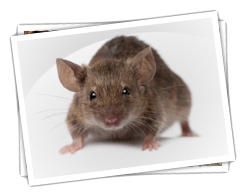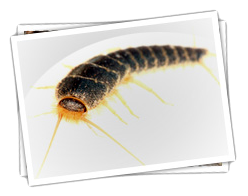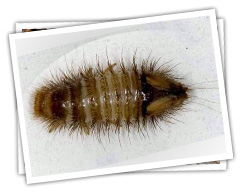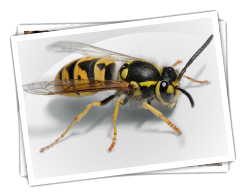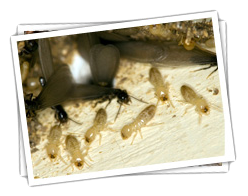Common Domestic Pests include:
Rodents
Rats and mice are seasonal pests, usually infesting your home during winter and autumn. They often nest in your roof void, wall voids or cupboards and are found rummaging around your main food sources, such as your kitchen. The gnawing and scratching sounds you hear coming from your roof or walls can cause serious harm to a range of materials in your home. Rodents can damage your skirting and plaster boards, electrical wires and machinery, which can even lead to a house fire! The biggest problem with rodents is the contamination they transmit via their droppings, and the fleas or worms that they carry.
Mice: The most common types of mice to nest in your home are House and Field Mice. Theses pests are small, have large ears and a pointed snout. Indoor mice are usually dark grey, where outdoor mice are a sandy colour. Generally they have a life cycle of one year, and in that time can have between 6-10 litters with around 5 young in each. They are most active at night and are very territorial, meaning they can easily settle upon entering your home.
Rats: The most common rat species in Australia are the Norway Rat and the Roof or Black Rat. The Norway Rat is the larger of the two, with a life cycle of 9-12 months. In that time it can have 5-6 litters, each with 8-10 young. The young sexually mature within 3-4 months, so the reproductive potential is quite alarming. The Roof Rat has a slighter build with a pointed snout, large prominent ears and a tail longer than its body. Again these pests live from 9-12 months and can have 4-5 litters in that time, with 6-8 young in each. They are creatures of habit, and can easily settle into their surroundings and leave behind more than 50,000 droppings in a year!
Spiders
Common spiders in the home can range from the White Tail to the Redback or Huntsman. Spiders 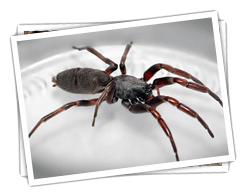 are a class of Arachnid that can be divided into Crawling or Hunting Spiders and Webbing Spiders. They have eight jointed legs and their bodies are divided into two sections. Nearly all Arachnids are nocturnal and aren’t often seen during the day unless they are disturbed. The venom of Arachnids is not necessarily poisonous to humans. Some spiders are capable of causing death by introducing a toxic substance into the bloodstream, but most bites result in no more than localised swelling and pain.
are a class of Arachnid that can be divided into Crawling or Hunting Spiders and Webbing Spiders. They have eight jointed legs and their bodies are divided into two sections. Nearly all Arachnids are nocturnal and aren’t often seen during the day unless they are disturbed. The venom of Arachnids is not necessarily poisonous to humans. Some spiders are capable of causing death by introducing a toxic substance into the bloodstream, but most bites result in no more than localised swelling and pain.
Spider Identification Chart
Identify spiders commonly found around your home.
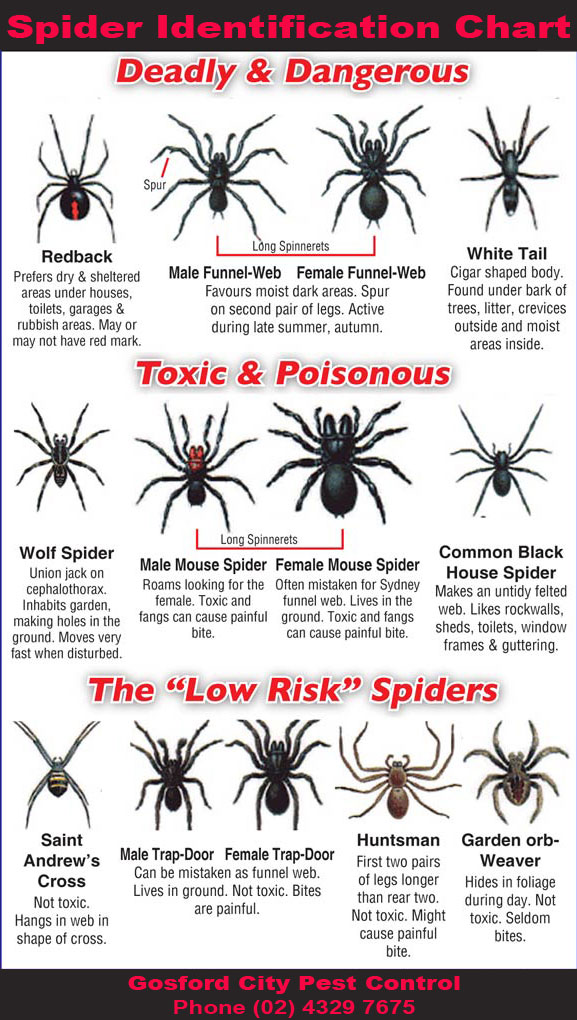
Call us for all of your pest control needs.
Or use our CONTACT FORM to make an appointment.
Ants
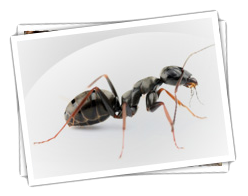 Ants are one of the most frustrating pests in the home, as a whole colony can appear in the blink of an eye. There are over 12, 500 classified ant species. Ants live with their entire colony in a nest and have a specific division of labour that allows them to actively communicate and solve complex problems. When scavenging for food, workers leave the nest by travelling in trails once a food source has been established. Ants have the ability to pose a health risk. They carry disease organisms that can cause Dysentery, Smallpox and other bacteria such as Salmonella. They commonly scavenge in kitchens and other food handling areas, such as garbage cans, dog faeces.
Ants are one of the most frustrating pests in the home, as a whole colony can appear in the blink of an eye. There are over 12, 500 classified ant species. Ants live with their entire colony in a nest and have a specific division of labour that allows them to actively communicate and solve complex problems. When scavenging for food, workers leave the nest by travelling in trails once a food source has been established. Ants have the ability to pose a health risk. They carry disease organisms that can cause Dysentery, Smallpox and other bacteria such as Salmonella. They commonly scavenge in kitchens and other food handling areas, such as garbage cans, dog faeces.
Cockroaches
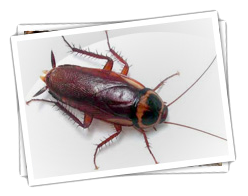
Cockroaches are one of the most ancient insects and have been around for over 350 million years. There are currently around 400 species in Australia. These pests have flattened oval-shaped bodies, compound eyes and long antennae. Infestation of cockroaches develops in and around buildings and other structures that provide food and shelter. Cockroaches are mostly nocturnal creatures which hide during the day and become active at night in order to find food. Most cockroaches rest in cracks and crevices and hide in the security of enclosed surfaces. Cockroaches can contaminate food products, utensils and various areas with droppings and skins. Some people may be allergic to cockroaches and develop skin irritations or asthmatic problems. This occurs when food is contaminated by cockroaches and ingested by humans.
The most common types of cockroach found in Australia are described in the table below. Call us for all of your pest control needs. Or use our CONTACT FORM to make an appointment.Cockroach Identification Chart
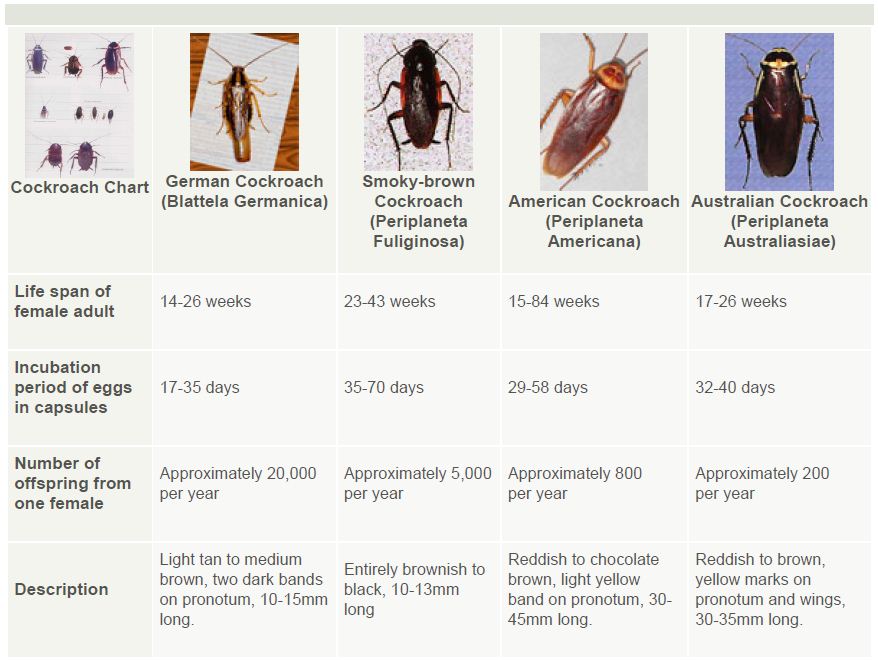
Silverfish
There are approximately 28 species of silverfish in Australia. The issue with having silverfish in your home is that they feed on a wide variety of materials such as linen, rayon, starch in clothing, wallpaper, book bindings, paper and dried meats. Evidence of their feeding is apparent by small holes in clothing and other possessions as mentioned. These pests restrict their activities to undisturbed areas such as closets, draws and bookcases.
Carpet Beetle
Carpet Beetles are damaging due to their ability to feed on animal based materials in your home such as fabrics, furnishings and clothing containing wool, silk, fur and felt. They are small with compact, oval bodies and usually invade the home throughout summer and spring. Adult Carpet Beetles lay eggs near food sources and can often linger in one area for more than 6 months. They are most commonly found in carpets, rugs, wall hangings, clothing and wool insulations. Areas where they feed can often be infested by their droppings and cast skins.
Fleas
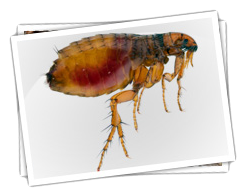
There are around 90 species of fleas in Australia. They are small and parasitic insects considered as blood suckers, feeding on mammals. Bites can cause irritation and even transmit disease. Fleas are most prevalent in your home during summer, as high humidity is good for the development of larvae. Adult fleas can jump onto their hosts and start feeding instantly. Most flea bites occur around the lower legs and ankles, with irritation and itchiness persisting for days. Most commonly fleas are spread from household pets, such as dogs or cats.
Bees & Wasps
Bees and wasps can be a cause for distress throughout the warmer months. The two belong to the insect order Hymenoptera. Bees enjoy settling around homes, between walls and in chimneys. They are not generally considered as dangerous, although may sting if they feel their colony has been disturbed. When bees establish a new colony or hive on a property, the colony must be killed, especially when people who are allergic can possibly be stung.
The two species of wasps most prevalent in Australia are the European Wasp and the Paper Nest Wasp. European Wasps prefer to nest around human habitation where they can scavenge food and sweet liquids. Large numbers of wasps can be attracted to picnics and barbeques and interfere with outdoor activities. Wasps are especially dangerous because unlike bees, they can sting a victim repeatedly. The venom from the sting of a European Wasp contains several toxins which may cause a hypersensitive or allergic reaction in some people. When pest control is necessary, a technician must be experienced in controlling bees and wasps and have all the necessary personal protective equipment.
Bedbugs and Lice
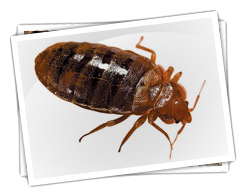 Bed Bugs are small, wingless insects that feed solely upon the blood of warm blooded animals, and hence, humans. Most commonly, your home is invaded by Beg Bugs if you or someone you live with has recently been travelling and has transported them. Although Bed Bugs do not transmit any serious diseases, their bites can be irritating and cause very sore, swelling marks on the body. Generally Bed Bugs are associated with hotels, taverns, inns and hostels. Bed Bugs spend most of their time hidden in cracks and crevices close to their sleeping hosts. During the night, they feed on their hosts and then return to their hiding places.
Bed Bugs are small, wingless insects that feed solely upon the blood of warm blooded animals, and hence, humans. Most commonly, your home is invaded by Beg Bugs if you or someone you live with has recently been travelling and has transported them. Although Bed Bugs do not transmit any serious diseases, their bites can be irritating and cause very sore, swelling marks on the body. Generally Bed Bugs are associated with hotels, taverns, inns and hostels. Bed Bugs spend most of their time hidden in cracks and crevices close to their sleeping hosts. During the night, they feed on their hosts and then return to their hiding places.
Termites
Subterranean termites are social insects that work 24 hours a day, 7 days a week. Although commonly referred to as white ants, termites are actually part of the cockroach family and evolved more than 250 million years ago. Their survival depends on their ability to find living space in a protective underground environment. The most destructive species of termites build their nest completely out of sight and below ground level, and can contain more than a million termites. Termites feed on dead plant material, generally in the form of wood and soil and are known to cause serious structural damage to buildings, homes and structures.
There are many different species of termites, some more dangerous to your property than others. Generally they are the size of a grain of rice and their appearance consists of a pale brown to white body with a darker head. Fungal decay in your property’s structure can make it significantly conducive to termites. Wood eating pests thrive on high levels of moisture which can be caused by plumbing leaks, poor ventilation and drainage problems.

